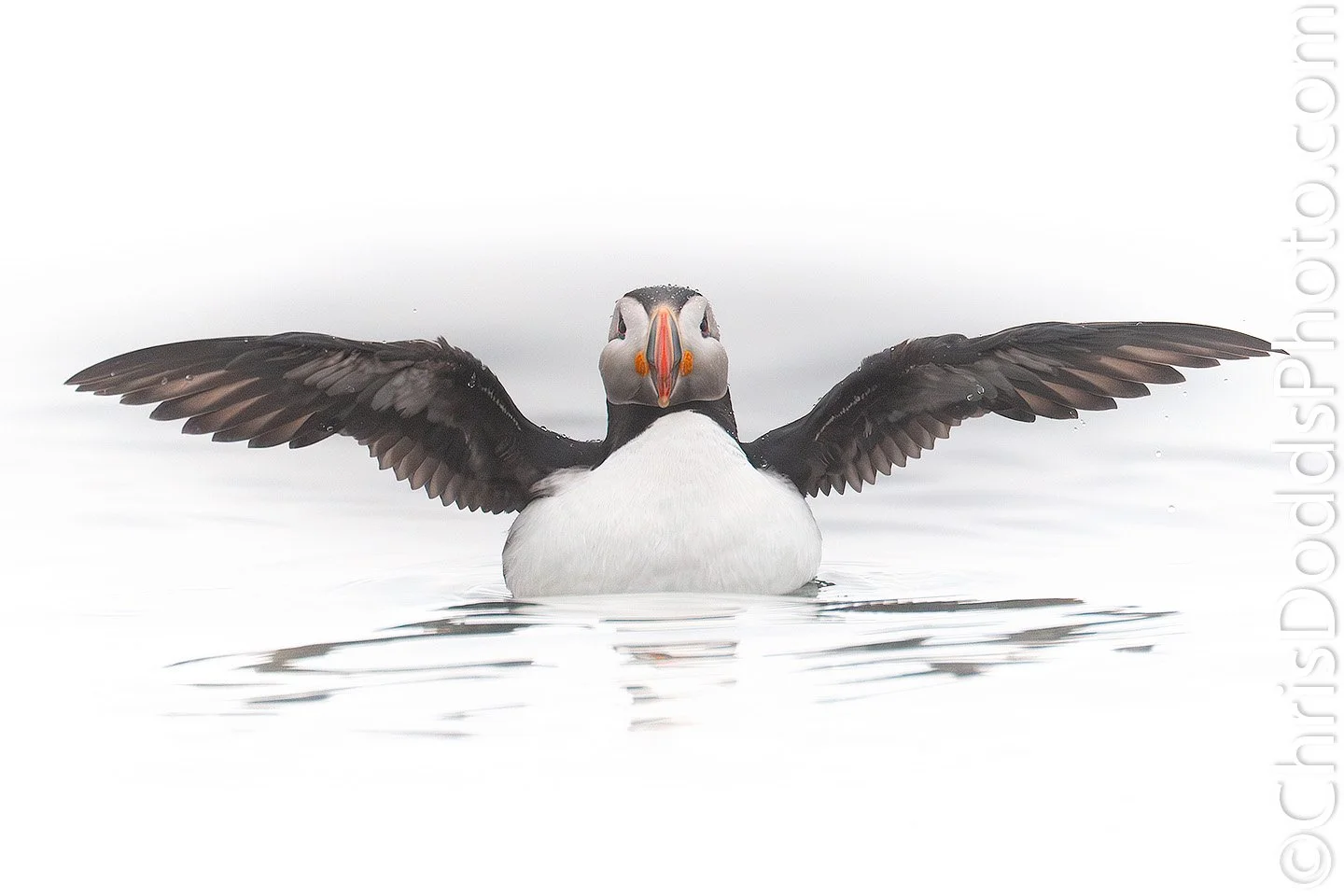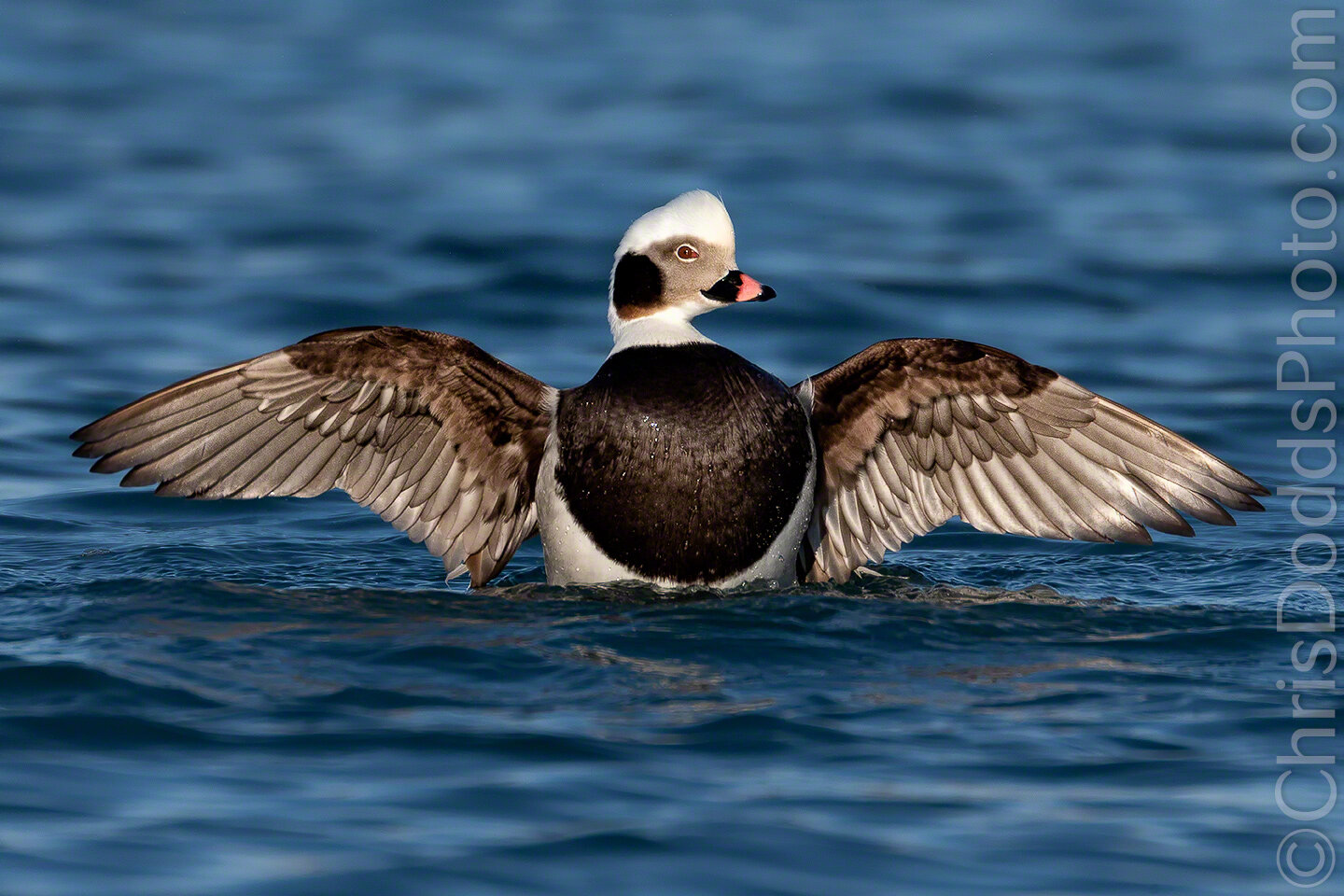What a way to kick off the first of five back-to-back Deluxe Atlantic Puffin Workshops—we're off to a truly incredible start. What a fantastic group! I'm thrilled to have four familiar and friendly participants from previous workshops join the mix.
We were greeted with calm, flat seas and a thick blanket of fog, which added a soft, moody and ethereal backdrop to the images. Conditions like that might sound challenging, but they're fantastic for photography—diffused light, no harsh shadows, and a peaceful atmosphere. We had exceptional opportunities right off the bat, with Razorbills and Atlantic Puffins floating just offshore. Everyone was in the zone, lying low, long lenses ready, soaking in every moment.
One of the absolute highlights was watching the puffins preen and then shake & stretch. They're incredibly diligent about keeping their feathers clean—preening isn't just about looking good (though they certainly do). It's how they maintain the waterproofing and insulation they need to thrive in the cold North Atlantic. Plus, it's a behaviour that adds life and personality to a photo. It was a joy to watch and photograph them so close, entirely at ease in their element and undisturbed by us.
Next year's workshops are already filling up: this place, these birds, and the whole experience are unforgettable. If you've been thinking about joining me for an up-close, small-group puffin adventure with guidance every step of the way, now's the time to grab your spot. I'd love to have you along.
Atlantic Puffin Wing Stretch (Fratercula arctica, Macareux moine, Frailecillo atlántico, ATPU) from my Deluxe Puffins Galore Workshop, Mingan Archipelago National Park Reserve, Quebec, Canada. Image Copyright ©Christopher Dodds. Sony a1 Mark II Mirrorless camera & Sony FE 600mm f/4 G Master OSS Lens with Sony FE 2X Teleconverter @1,200mm. ISO 10,000, f/8 @ 1/2,500s Manual exposure. Full frame image.






















